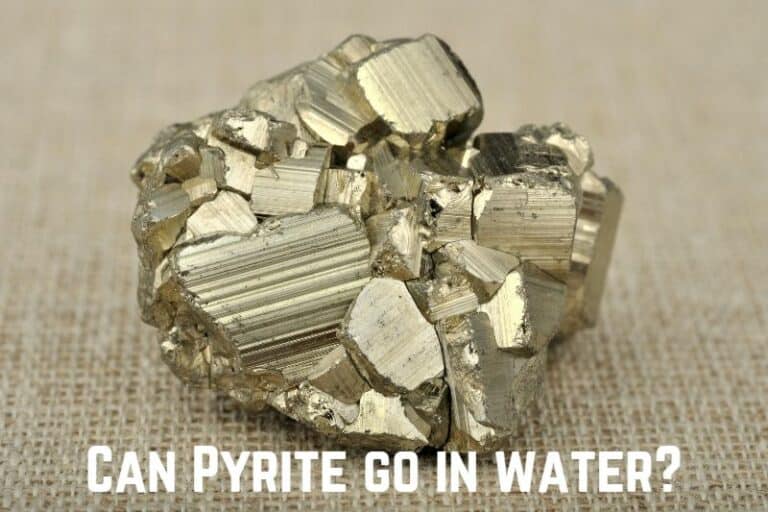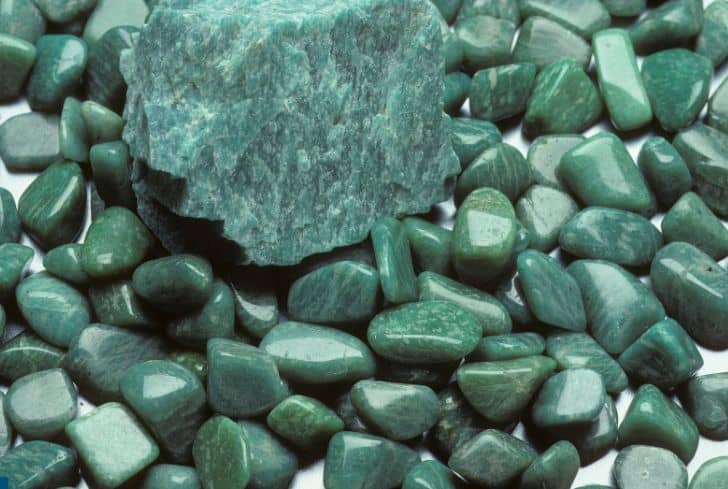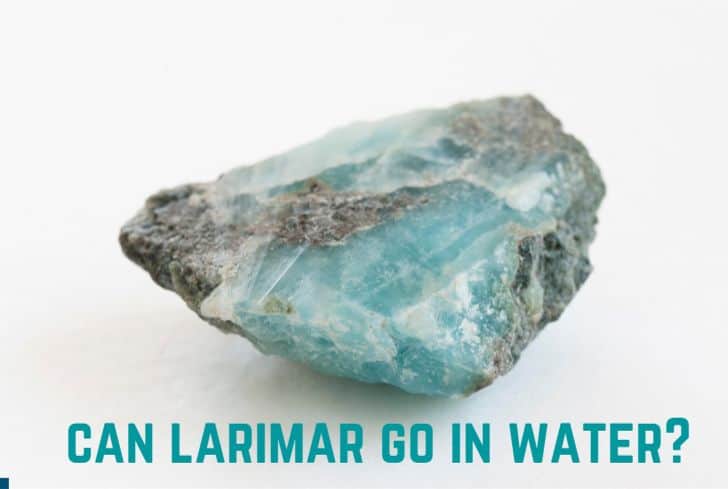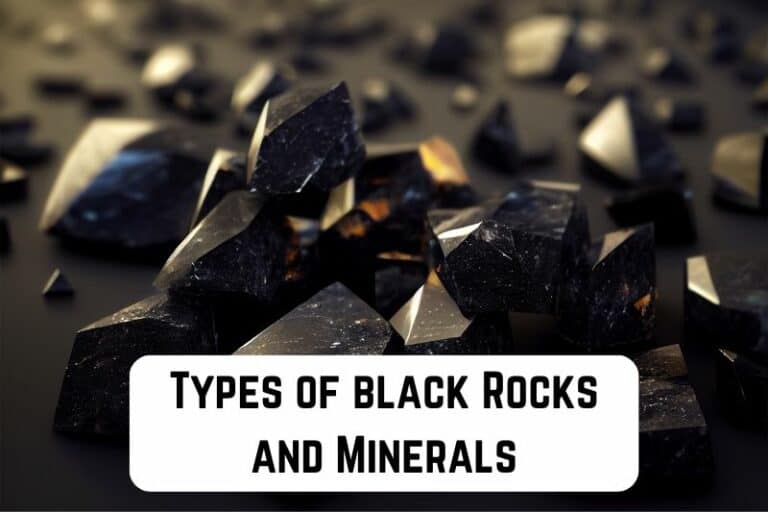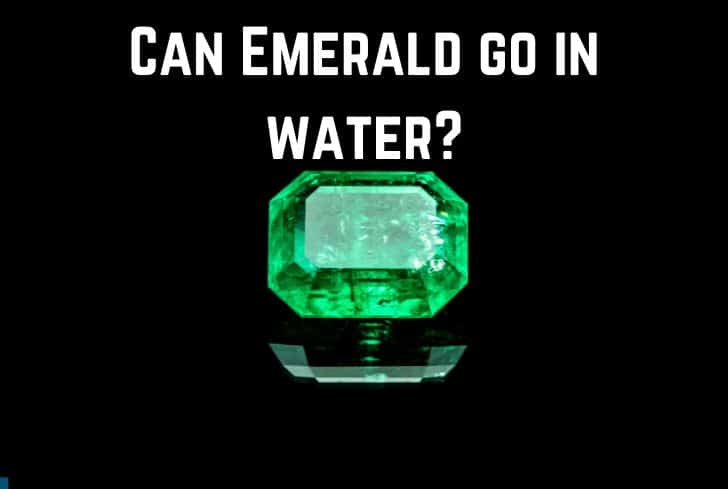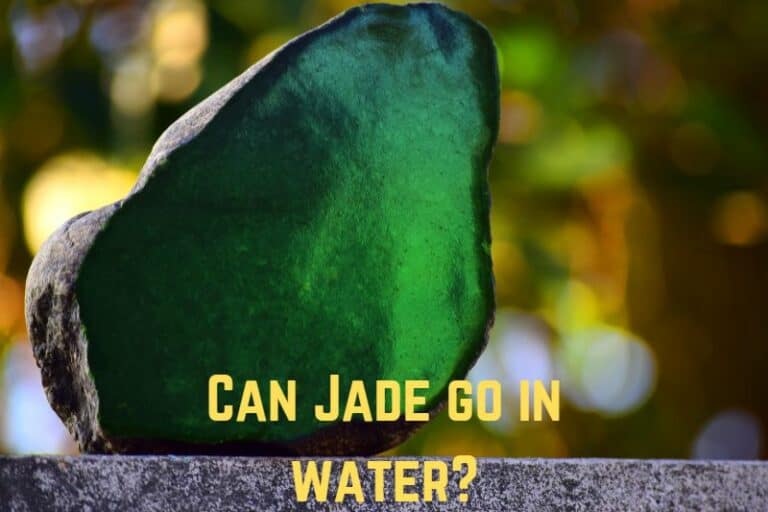Top 10 Rarest Gems in the World (With Pics)
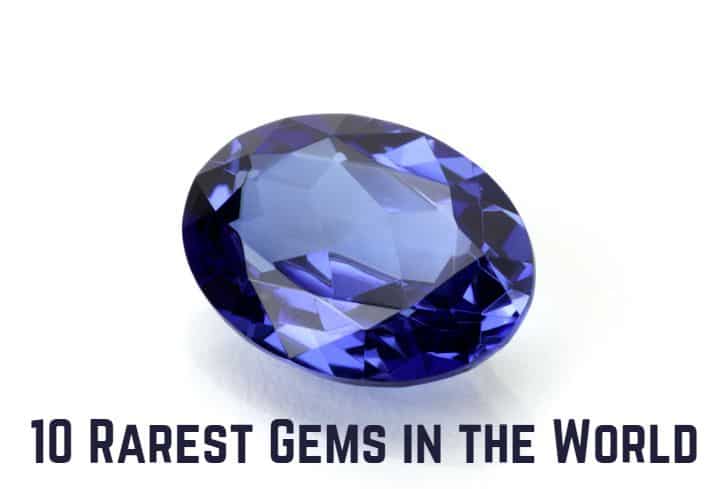
We are all familiar with common gems like quartz and amethyst, which are used in the form of jewelry, ornaments, healing stones, etc. But have you ever wondered which are the rarest gems?
In this article, we are going to discuss just that. The rarity of a gem is determined by factors like its availability, demand, and physical characteristics. The top 10 rarest gems in the world include:
Read: Can Topaz go in the Water?
1. Musgravite
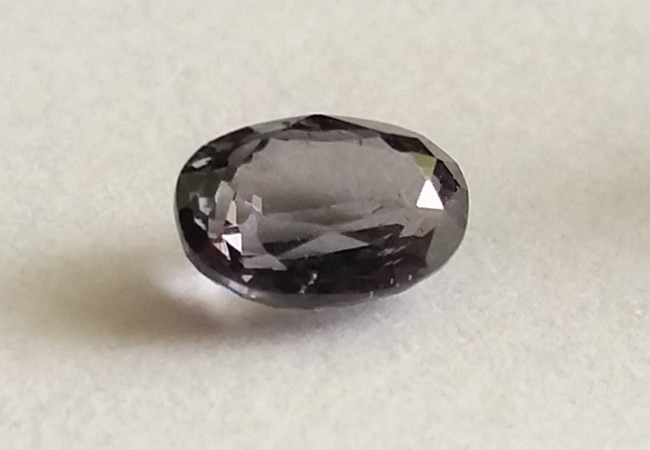
Musgravite, also known as magnesiotaaffeite-6N’3S, is a rare oxide mineral. It was first discovered in 1967 at Musgrave Ranges of South Australia, from where it acquired its name. Its chemical formula is Be(Mg, Fe, Zn)2Al6O12, and it belongs to the taaffeite group of minerals.
Musgravite has a wide range of beautiful colors, from light olive to deep violet, and it has a vitreous lustre. In terms of diaphaneity, it is translucent to transparent. It has a value of 8-8.5 on the Mohs Hardness Scale, which makes it ideal for jewelry and gemstones. Because of its rarity, musgravite sells for roughly $35,000 per carat.
Musgravite is a magnesium-rich beryllium oxide that has a trigonal crystal system. Musgravite differs from Taaffeite only in magnesium content, and it is hard to differentiate the two except by Raman Spectroscopy.
2. Tanzanite
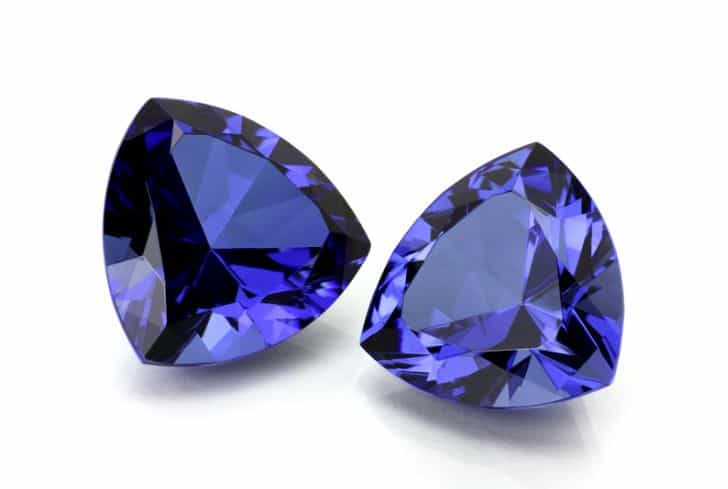
Tanzanite is the blue and violet variety of zoisite mineral, which is a calcium aluminum hydroxyl sorosilicate. Its colour is due to small amounts of vanadium. Tanzanite is found only in the Manyara Region of Tanzania, around a very small mining area in Mererani Hills.
Tanzanite has a beautiful pleochroism, meaning that it exhibits different colors when viewed from different angles. It alternatively appears blue, violet and burgundy depending on the crystal orientation and direction of light. Under fluorescent light, the blues are more evident, while the violet colors appear more strongly in incandescent light.
In its natural state, tanzanite is reddish brown. It requires heat treatment to remove this brown layer and get the desired blue-violet color of the stone. This gemstone was given its name by the jewelry retailer brand Tiffany and Co., which introduced it to the market in 1968.
In 2002, the American Gem Trade Association chose Tanzanite as a December birthstone.
3. Red Beryl

Red Beryl is an extremely rare variety of beryl, which gets its red color from manganese ions embedded in beryllium aluminum cyclosilicate crystals. It was formerly known as bixbite and is marketed as red emerald/scarlet emerald.
It is so rare, that its crystals suitable for gem-cutting are found in only one location: the Ruby-Violet claims in Wah Wah Mountains of Beaver County, Utah. It is estimated that one red beryl crystal is found for every 150,000 gem-quality diamonds. Red Beryl comes in various tints like bright ruby, strawberry, cherry, and orange. Most red beryl crystals are under 1cm long, although the largest ones are about 5cm in length.
Red Beryl is so rare because its formation requires an incredibly unique environment: beryllium must be present in large amounts along with manganese; the conditions must be suitable for beryllium, manganese, aluminium, silicon, and oxygen to crystallize together; finally, there must cavities and gaps for the crystals to grow.
4. Paraiba Tourmaline

Paraiba Tourmaline is amongst the most prized gemstones in the world, known for its intense blue colours. This gemstone was found in the 1980s in the Paraiba Hills of Brazil, from where it gets its name.
Stones with neon blue colors with strong saturation and medium tone are the most valued ones. Many of these gems also have a green hue, which can affect the price if too noticeable. Paraibas with colors like pink, violet, and purple don’t command a high price because of their lower demand. For Paraibas, color is more important than clarity, and inclusions don’t affect value much.
Scientists have discovered that the stone gets its intense blue color from copper, although it also has manganese and small amounts of bismuth. Some paraibas stones are heat treated, which can lighten their tones and turn violet/purple specimens blue. Because of its rarity, paraibas tourmaline can cost roughly $20K per carat.
5. Larimar
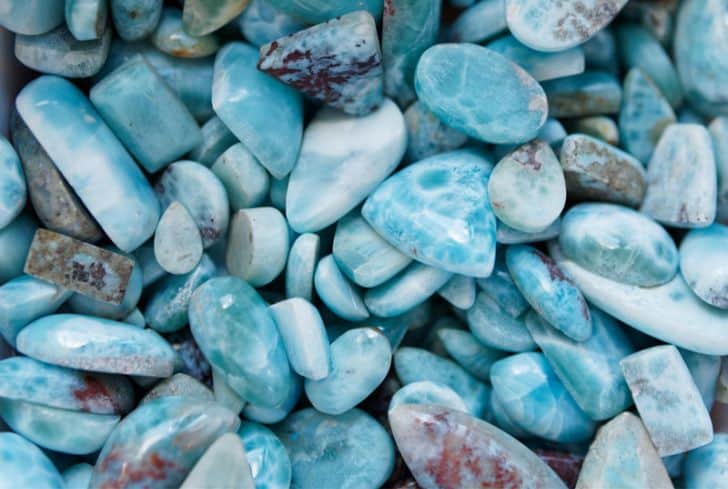
Larimar is the market name for a rare blue variety of silicate mineral pectolite, which has the formula NaCa2Si3O8(OH). It is found only around the city of Barahona in the Dominican Republic. It comes in a wide range of colors: bluish-white, turquoise green, violet and indigo, etc.
Larimar was discovered on a beach near the Bahoruco Mountain Range. The leader of the expedition, Miguel Méndez, took his daughter’s name “Larissa” and combined it with the Spanish word for sea (“mar”) to come up with “Larimar”, whose appearance indeed reflects the color of the sea.
Larimar is a type of pectolite, which is an acid-silicate hydrate of calcium and sodium. The blue colour of larimar is due to copper replacing calcium in pectolite. The value of larimar depends on the colouration and the crystal configuration of the stone: the more intense the blue color, the higher the price. However, this beautiful color is photosensitive and can fade in sunlight.
Read: Can Goldstone Go in the Water?
6. Alexandrite
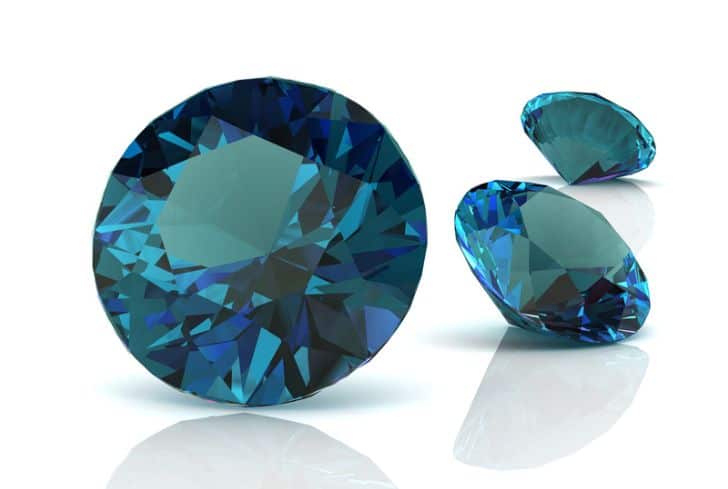
Alexandrite is one of the most magical gemstones in nature that changes its appearance in different lights. It is green in sunlight and red in incandescent light, which has earned it the title of “Emerald by day, ruby by night”. It is also the modern birthstone of June.
Alexandrite’s value is determined mainly by two factors: color and the degree of color change. The closer the color is to pure green/red, the higher the value. The same goes for the color change—a greater degree means greater value. Stones can exhibit 5% to 100% color change. Alexandrites that are of mixed colors (blue-greens or brownish-reds) are less valued.
Besides color, clarity and size affect the price of alexandrite. The highest-quality gemstones up to 1 carat in size can sell for $15,000 per carat; while larger stones range from $50,000 to $70,000 per carat. Alexandrite is so rare because it requires beryllium and chromium, which rarely exist together.
Check out this video by Gemporia to see the magical color changing of Alexandrite.
7. Benitoite
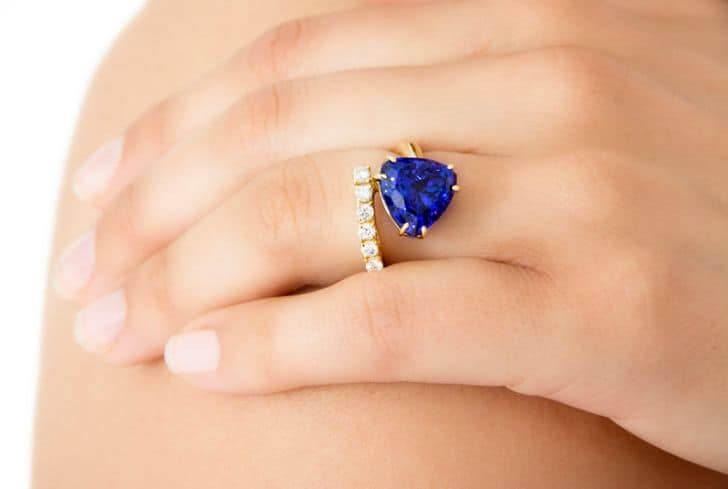
Benitoite is a rare blue variety of barium titanium cyclosilicate. It is one of the most attractive gems in the world because of its dispersion, which is even greater than those of diamond and sapphire.
Benitoite usually forms in low-temperature, high-pressure environments, such as the subduction zones at convergent plate boundaries. The rare stone is found only in San Benito County, California, and it is the state’s official gem. At first, the stone was thought to be sapphire, but benitoite’s greater dispersion and birefringence values distinguished it.
Rich blue and eye-clean benitoite stones command the highest value. Very light or very dark stones, on the other hand, are less valued. Benitoite has a value of 6.5 on the Mohs Hardness Scale, which is decent enough for jewelry, although protective settings are still recommended.
8. Painite

Painite is a rare borate mineral. It was discovered in Myanmar by the British mineralogist Arthur C.D. Pain who at first misidentified it as Ruby. In the 1950s, it was revealed to be a new gemstone and was named after its discoverer.
Painite is made up of calcium, zirconium, boron, aluminium and oxygen (CaZrAl9O15(BO3)). Painite also has trace amounts of chromium and vanadium, which give the stone its typical orange-red to brownish-red color, making it look similar to topaz.
Until 2001 only three painite specimens were known to exist. Later many more specimens were discovered, but usable materials are still rare. Due to its extreme rarity, Painite can cost in the range of US$50,000 to $60,000 per carat.
9. Taaffeite
Taaffeite is an oxide mineral with the formula BeMgAl4O8. It was named after its discoverer Richard Taaffe, who found the first cut and polished gem in a jeweller’s shop in October 1945 in Dublin. It is the only gemstone to be initially found through a faceted stone. It comes in a wide range of colours like greyish violet, light green, mauve, etc.
Taaffeite is principally made up of beryllium, magnesium, and aluminum. When it was studied in 1951, it was the first mineral to contain both beryllium and magnesium as essential components.
Most pieces of the stone were earlier misidentified as spinel. Taaffeite exhibits the property of double refraction, which allows it to be distinguished from spinel.
Taaffeite forms in carbonate rocks along with fluorite, mica, and spinel. It is found in the alluvial deposits in Sri Lanka and southern Tanzania. Lower-grade specimens are also found in limestone sediments in China.
Read: Can Chrysocolla Go in the Water?
10. Poudretteite
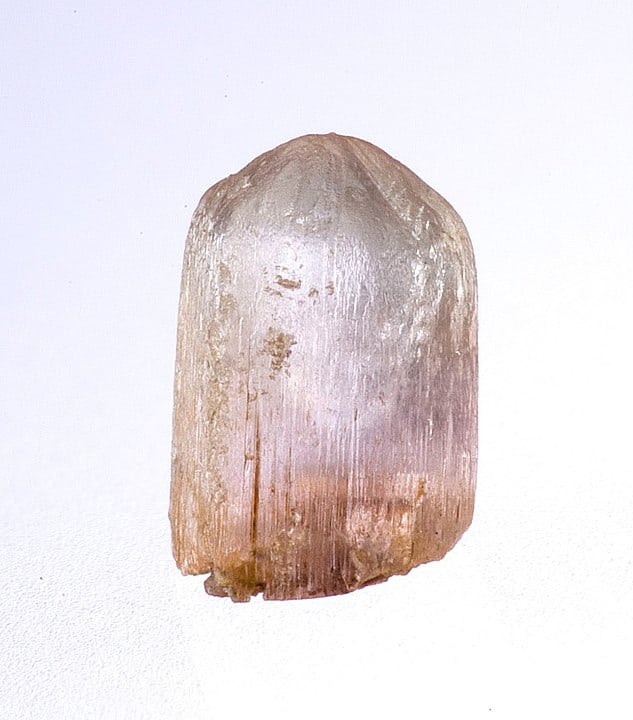
Poudretteite is an extremely rare mineral that was first found in Mont St. Hilaire, Quebec, Canada, during the 1960s. It was named after the Poudrette family who operated a quarry in that location.
Poudretteite is colourless to light pink with a vitreous lustre. The stone is transparent, and it occurs as barrel-shaped prismatic crystals. It does not have cleavage and breaks with a conchoidal fracture.
Poudretteite and Taaffeite are among the most uncommon gems, and less than 50 specimens have been found of each of the two.
Conclusion
In this article, we have looked at the top 10 rarest gems in the world. These gems require very unique geochemical environments for their formation. Moreover, some of their specimens are not usable or do not have the right appearance, which is why only some specimens can be used. This rarity is what makes them hugely expensive, with many of these priced at over $10,000 per carat. But, of course, their beauty is priceless.


